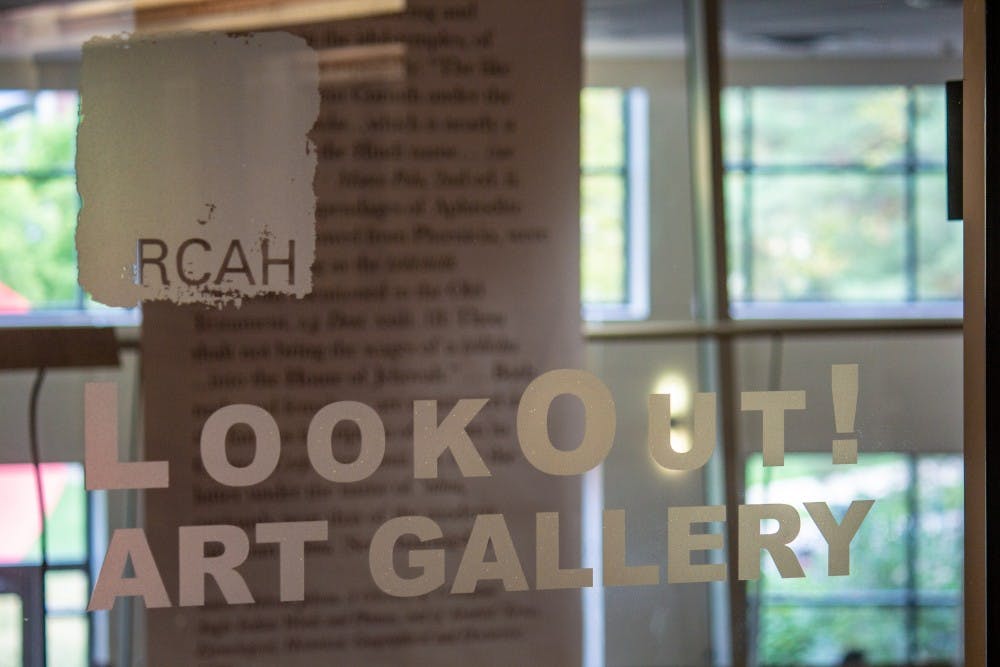The LookOut! Art Gallery on Sept. 24 opened a new exhibit called "The Figure of the Indian Dancer." The exhibit — open to the public through Oct. 19 — was created to explore native dancers of India in culture from periods of colonization to the present.
The exhibit will be open to the public Monday to Friday from 12 to 3 p.m. through Oct. 19.
Meet the curator, Sitara Thobani, an assistant professor in the Residential College in the Arts and Humanities (RCAH).
“This exhibit really lines up with my research right now. My research has come out of my own experiences as an Indian classical dancer,” Thobani said. “It was my experiences of kind of being in these positions of representing Indian classical dance, Indian culture through performance that got me thinking about these issues in the first place."
Thobani talked about the relationship between the history of the dance and colonialism and nationalism in India when conducting her research, which eventually evolved into the exhibit.
There is a complicated relationship between old and new contexts of thinking about Indian dance, she said.
“What you see happening in India ... you have these ideas that are quite strong in the Victorian era around what proper forms of being are, what proper definitions of femininity are ... and you can see this because in a lot of representations of the Indian dancer they were overly sexualized,” Thobani said.
"The purpose of the exhibition is to draw attention to the idea that this Indian dancer isn’t one person, that they weren’t actually talking about real women, it was really about what they were representing.”
Thobani’s research provided the material for the exhibit, but additional help was required to make the exhibition come to life in the gallery space.
"Why does this figure keep appearing? What does that tell us about how Europeans saw, not only Indians, but how they saw themselves as well," Thobani said. “With this exhibition I’m trying to draw attention to the many ways in which this figure has been imagined.”
An artist like Thobani comes up with their own ideas for how they want their exhibit to flow, and then LookOut! Preparator and Academic Specialist Steve Baibak works with the space to present the text and images in creative ways.
“Every show brings its own set of variables. This one particularly had to be actually produced, so often we’ll do a show and it will be so-and-so’s art or their photographs, whereas this is more like a research show so it’s completely different,” Baibak said. “I think about stagnation, I think about flow, how things flow through the show.”
Thobani’s exhibit flows through sections of ethnography, history, misconceptions and regaining what has been lost in the culture of Indian dance.
The LookOut! Gallery is used for classes and special events in addition to hosting art exhibits. That needed to be considered when setting up "The Figure of the Indian Dancer."
Baibak used adhesive printing paper to hang large photographs and pieces of text, without having to use a lot of frames.
Tessa Paneth-Pollak, the new director of exhibition spaces within RCAH, also played a role in the planning and execution of the exhibit.
“I was involved from last spring, meeting with Sitara to discuss her ideas and helping Steve, co-strategizing with Steve about how we could activate the space, how we could exhibit dance,” Paneth-Pollak said. “We thought a lot about how do we get movement, without some of the problems of exoticization, or voyeurism that Sitara was concerned about.”
Support student media!
Please consider donating to The State News and help fund the future of journalism.
Discussion
Share and discuss “History of Indian dance explored in new LookOut! Art Gallery exhibit” on social media.





